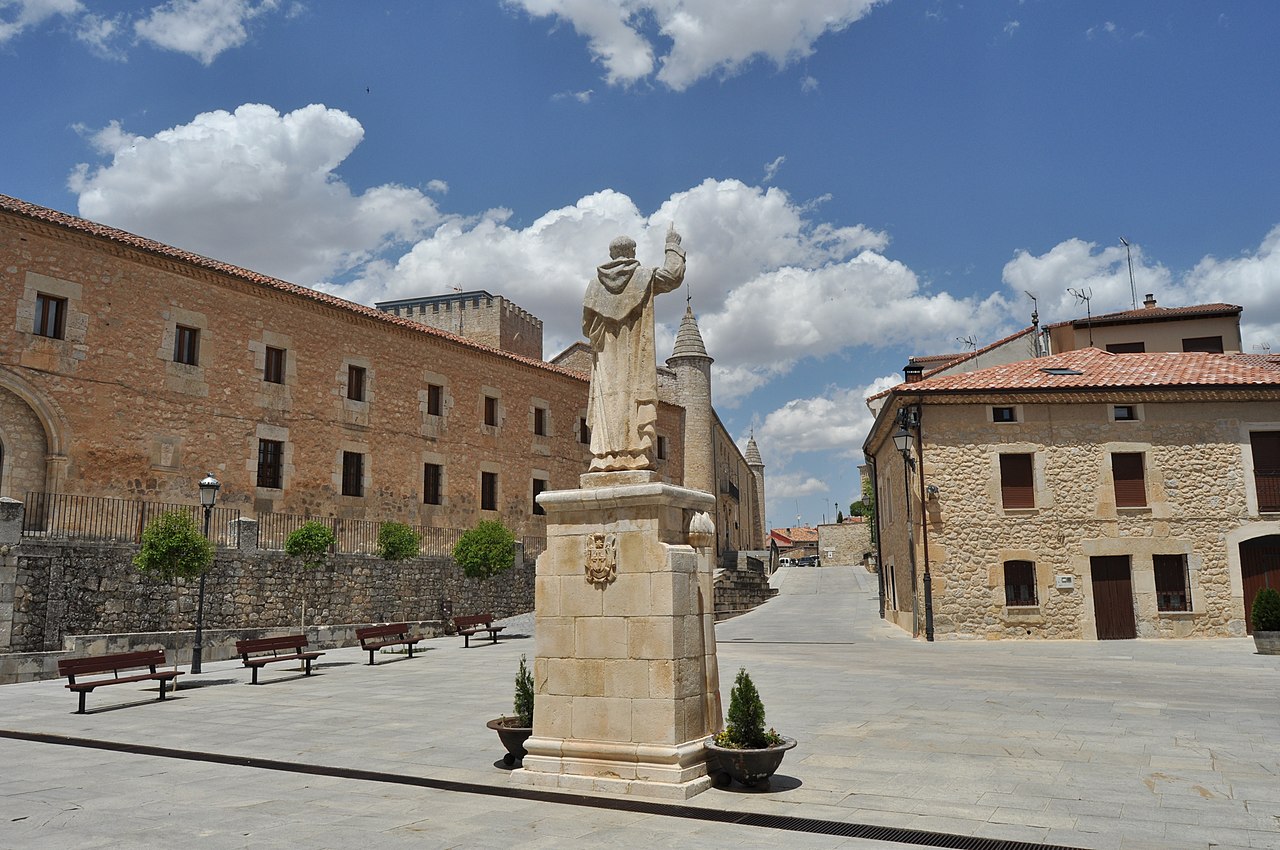
The villa of Caleruega is located south of the Burgos province, In the Ribera de Duero region, famous for its wines. But, above all, it is known as birthplace of Saint Dominic de Guzman, founder of the Dominican order.
With a long history that dates back to the 1068th century, this town obtained the status of Señorío in the year XNUMX by decision of the king Alfonso VI the Brave and saw the passage of Cid path of exile Today Caleruega is a small town that offers you a very beautiful natural environment and, above all, many monuments. We are going to talk to you about all of this.
Torreon de los Guzmanes
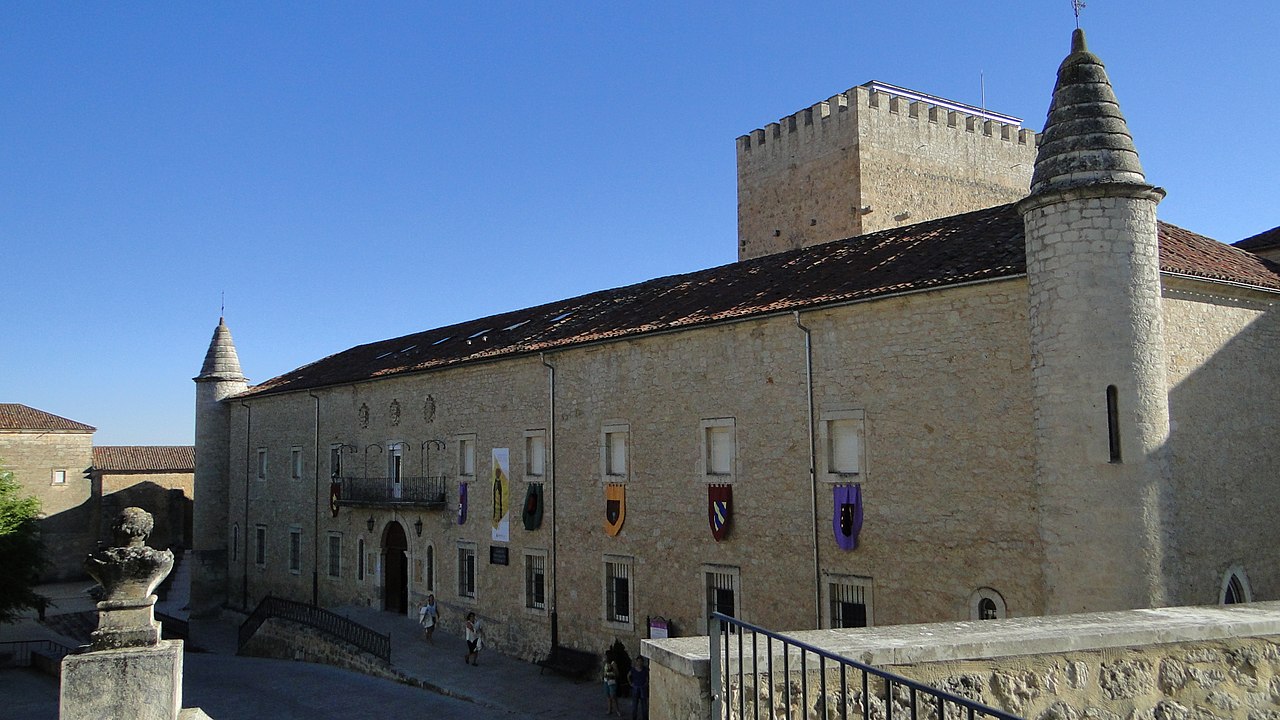
The Dominican convent with the tower of Los Guzmanes standing out in its center
This rectangular tower was built in the XNUMXth century as part of the set of defensive buildings on the Duero border between Hispanics and Muslims. It is the oldest monument in Caleruega and has four floors that allow it to reach seventeen meters high. As for its plant, it measures fourteen by nine and its walls are two meters thick.
The first two heights respond to the pre-romanesque with Mozarabic elements such as the second window. On the other hand, the third is later and already fully romanesque, while the last one is a crenellated patio that offers you spectacular views of the Ribera de Duero. Next to the church tower and the walls it constituted the medieval nucleus of the Burgos town. Not long ago, it has been renovated to be used as an exhibition hall for the municipality.
Convent of the Dominican Fathers
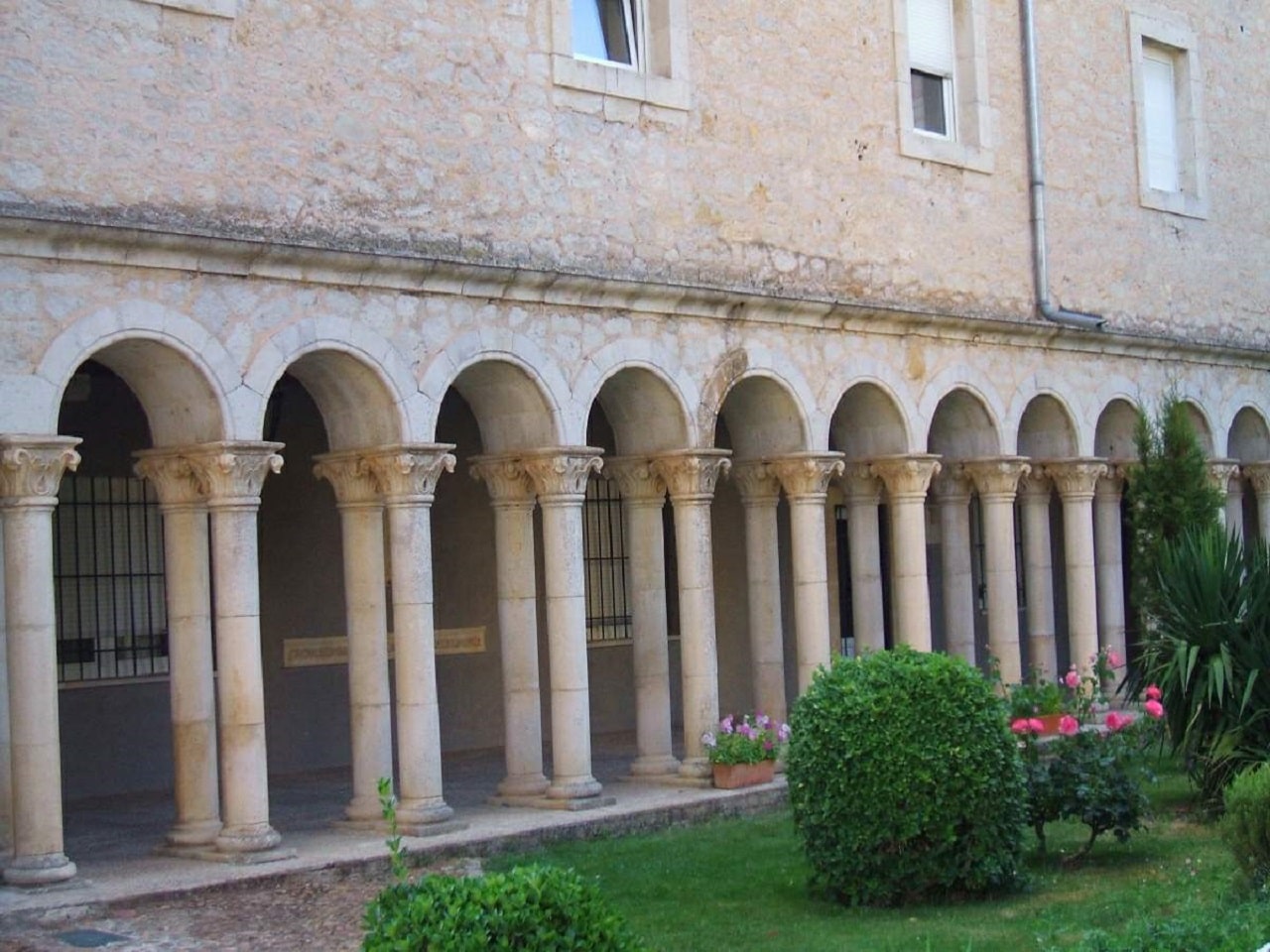
Detail of the cloister of the Dominican convent in Caleruega
It was built, precisely, surrounding the Torreón de los Guzmanes. You will be surprised to see it to know that it was built in the middle of the XNUMXth century, since its style is Neo-Romanesque. As we have told you, Santo Domingo, founder of the Dominican order, was born and lived in Caleruega. Therefore, it is not surprising that many of the monuments in the town are linked to it.
The convent is a large rectangular fortress-type building with small towers at its corners. These, in turn, are inspired by those that were in the old walls. Inside, the chapel that keeps a gothic crucifix whose crossbars, however, are Romanesque. It also houses a renaissance carving of the virgin and another baroque and polychrome from Santo Domingo himself. As if this were not enough, its ceiling is adorned with beautiful stained glass windows.
You can also see in the convent a dominican museum with pieces linked to the order and several sculptures of the Father Alfonso Salas. But it will be more curious to know that the monastery is located where the house of Domingo de Guzmán himself was. In fact, he keeps the call Winery of the Blessed Juana de Aza, mother of the saint. According to the legend, in it he multiplied a vat of wine to supply it to the poor. In fact, you can see in the place an alabaster relief of Andres Abelenda who remembers the miracle.
Royal Monastery of Santo Domingo de Caleruega
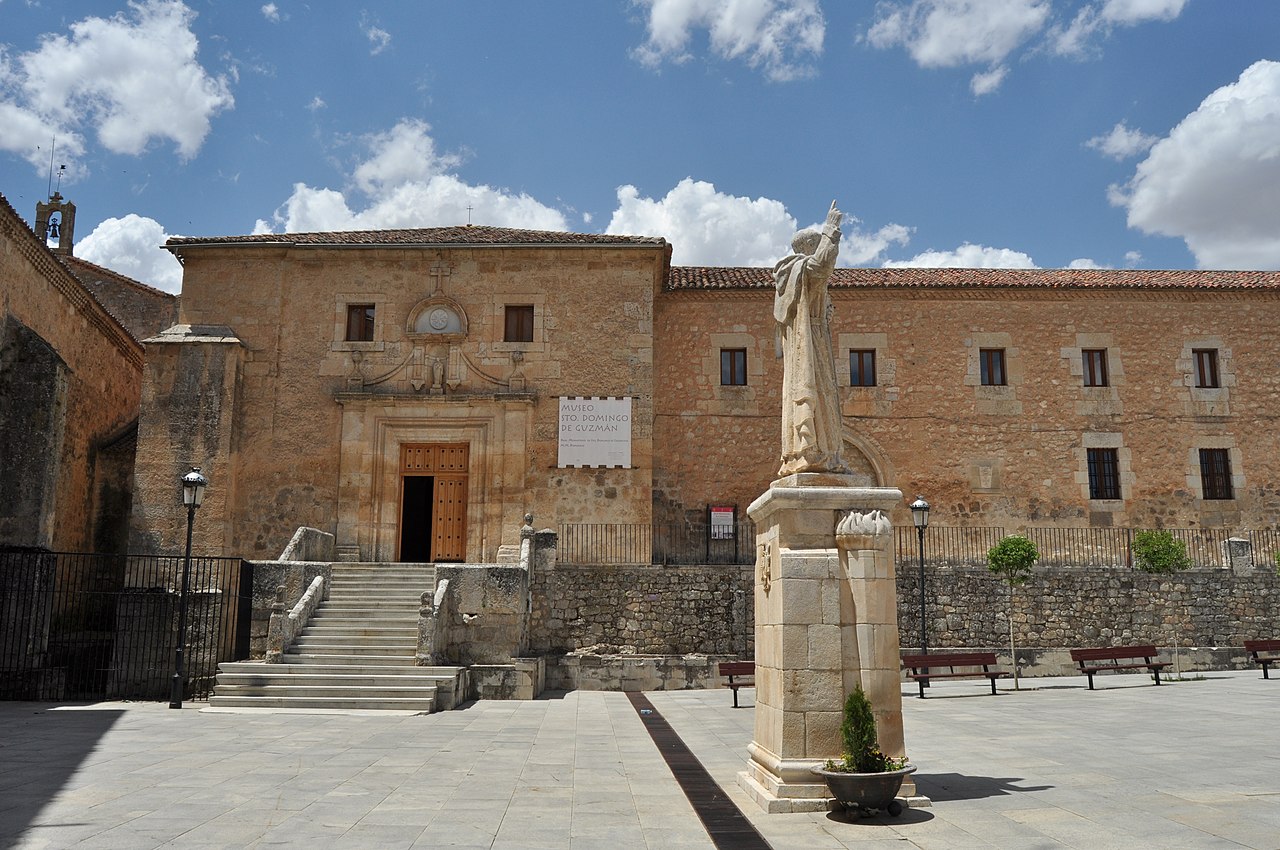
The Royal Monastery of Santo Domingo
In turn, next to the convent is this monastery whose origins date back to the same time as the saint. In the XNUMXth century and after his death, his brother, the Blessed Manes, built a small chapel in his birthplace. The king learned Alfonso X the Wise, ordered the construction of a Gothic church that was added to the family manor house.
Nuns soon arrived from Saint Stephen of Gormaz to populate what had already become a monastery. At that time, the construction of the cloister also began, which combines the late Romanesque and Gothic styles. In it you can see the sepulcher of the infanta Leonor, daughter of the aforementioned monarch. Likewise, already in the XNUMXth century a new church on the remains of the previous one. The latter is Renaissance, although its cover responds to the canons of the Baroque, and presents a Latin cross plan.
Inside it houses three beautiful altarpieces. The main one is also Renaissance and shows the life of Saint Dominic in three paintings by Blas de Cervera, as well as the Calvary in a sculpture of the school of Gregory Fernandez. Instead, the other two are baroque. For its part, in the sacristy you can see a gothic christ and tombs of Félix and Antonio de Guzmán, father and brother of the saint. Also in the crypt there is a tomb, in this case the Father Manuel Suarez. But the most curious thing about this last space is that it has a little hole from which water comes out and that marks the exact point where Domingo was born.
The interesting things that the monastery offers you do not end there. In one of its gothic rooms you have the museum, which has high quality parts. For example, you can see polychrome stone carvings of the Virgin and the Announcing Angel. Finally, he has a monastic archive that keeps documents such as papal bulls, privileges of kings or letters from characters such as Saint Raymond of Peñafort. The oldest dates from the XNUMXth century.
On the other hand, in the square in front of the monastery you can see a saint dominic statue in preachy gesture. But now we want to talk to you about the most important church in Caleruega.
The parish church of San Sebastian
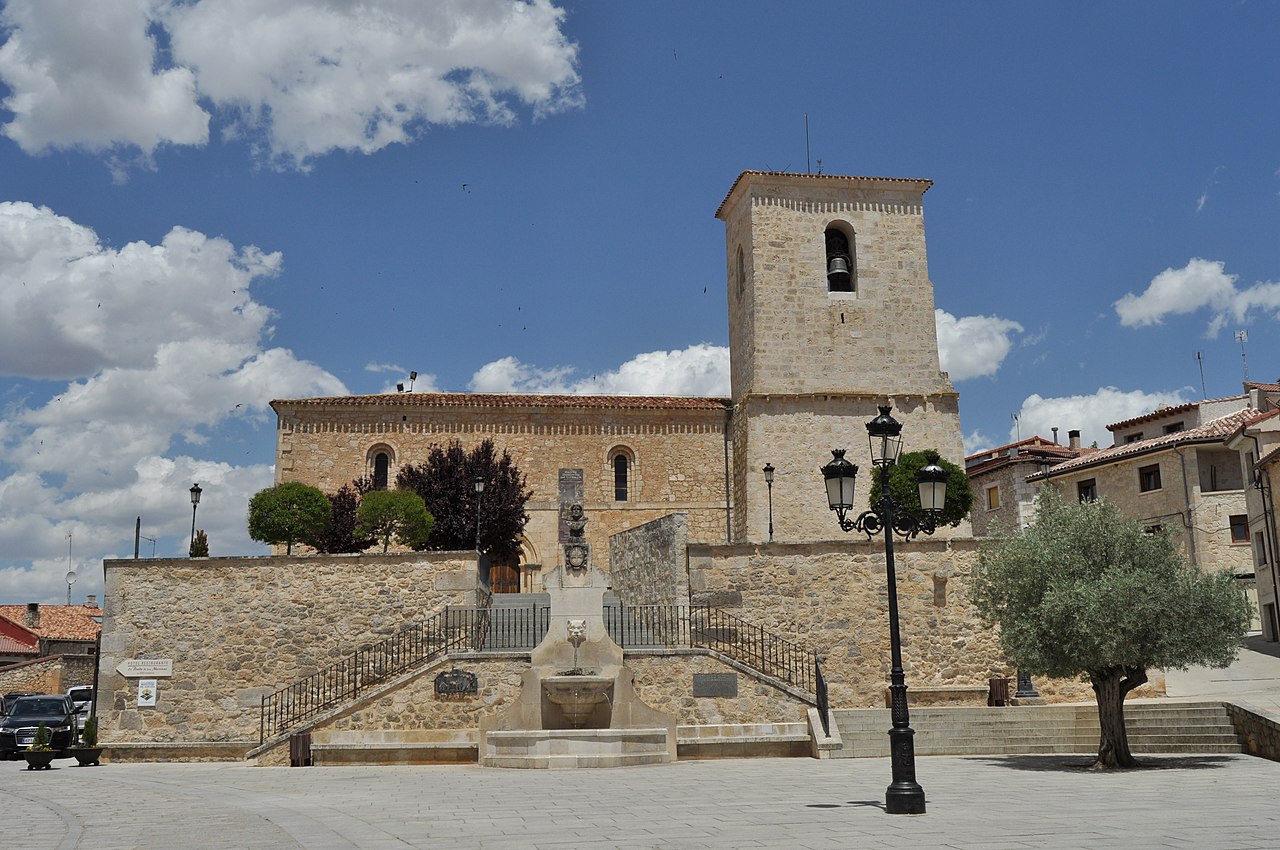
The parish church of San Sebastián in Caleruega
It's a temple Romanesque from the XNUMXth century, although from its original construction only the entrance arch, the bell tower and a two-way window have been preserved, that is, divided vertically into two bays by a column. The rest of its elements are later.
However, you are interested The cover with three smooth arches, the central one supported on columns adorned with Corinthian capitals. Also noteworthy is the apse-shaped and renovated presbytery. Precisely, inside you should pay attention to the Romanesque altar with a figure of Christ. At this point, the mother of Domingo de Guzmán, who we have already told you about, was buried.
But the saint is also represented in a carving, as well as San Martin de Porres, another important figure of the Dominican order. And, together with them, the Virgin of the Candles y San Sebastián, patron of the municipality. The sculptural decoration of the temple is completed with images of San isidro labrador, which is taken out in procession to bless the fields, and Saint Joseph with the Child Jesus.
The interpretation center of Las Loberas and the monument to the farmer
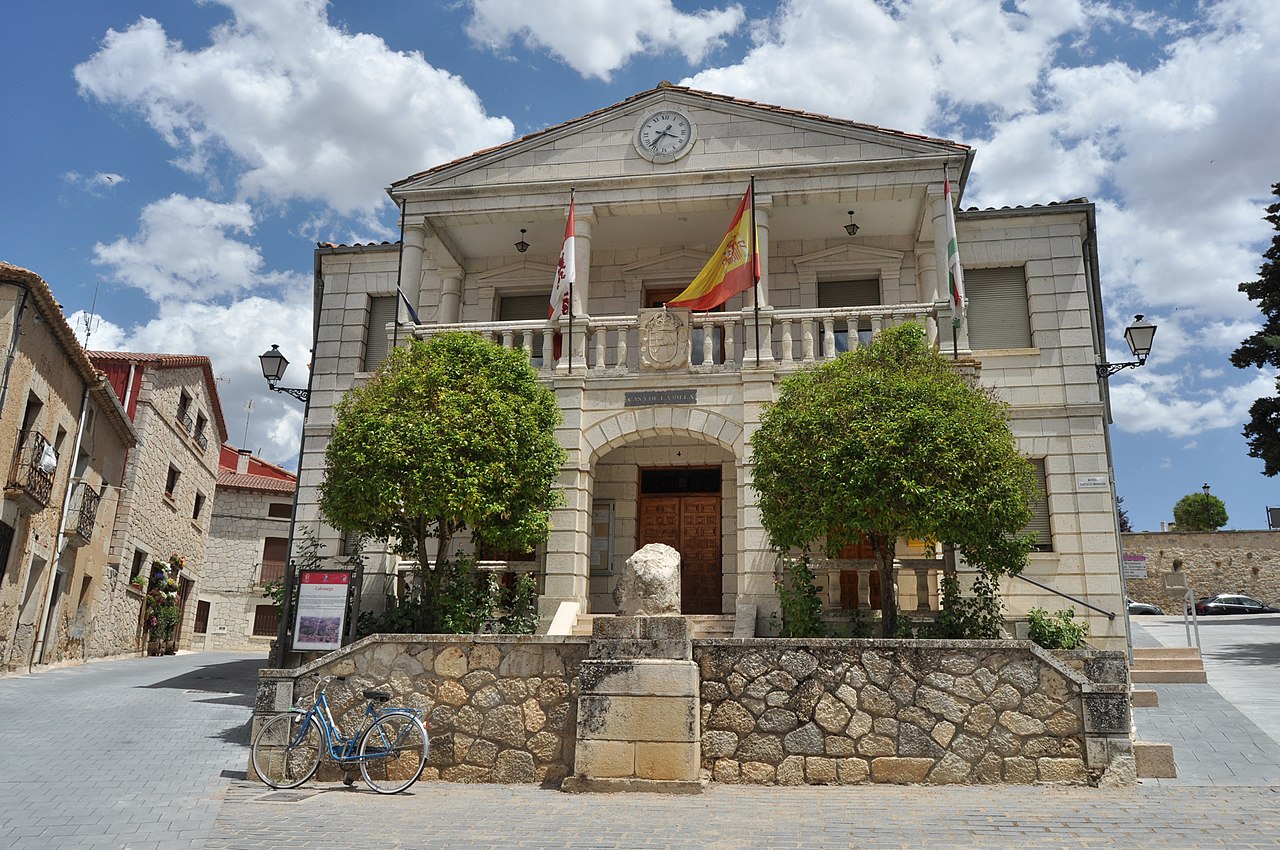
City Council of Caleruega
Caleruega has had and still has an enormous agricultural tradition. It is therefore not surprising that it has a monument to the farmer that pays homage to his figure. You will find it in the town itself and it is made up of a chariot and a stone bas-relief.
The ethnographic tradition of the town also responds to the nature interpretation center of The Loberas. You will find it in the district of The Rozadas and it is made up of elements of popular architecture that have been transformed into a museum. Among them, the small circular spaces that the shepherds prepared to sleep inside the corrals to shelter from the wolves stand out (hence they were known as wolverines).
But, at the same time, this installation serves as a point of interpretation of the environment. In fact, it also has a Watch tower to observe the flora and fauna of the area, especially the steppe birds. There are even several peculiar oaks.
Las Loberas is not the only ethnographic museum in Caleruega. You can also visit the Valdepinos Winery, an old facility for pressing grapes that has been rehabilitated. In this you can see all kinds of instruments related to the harvest and farming implements.
The surroundings of Caleruega: the Roman road and the rock of San Jorge
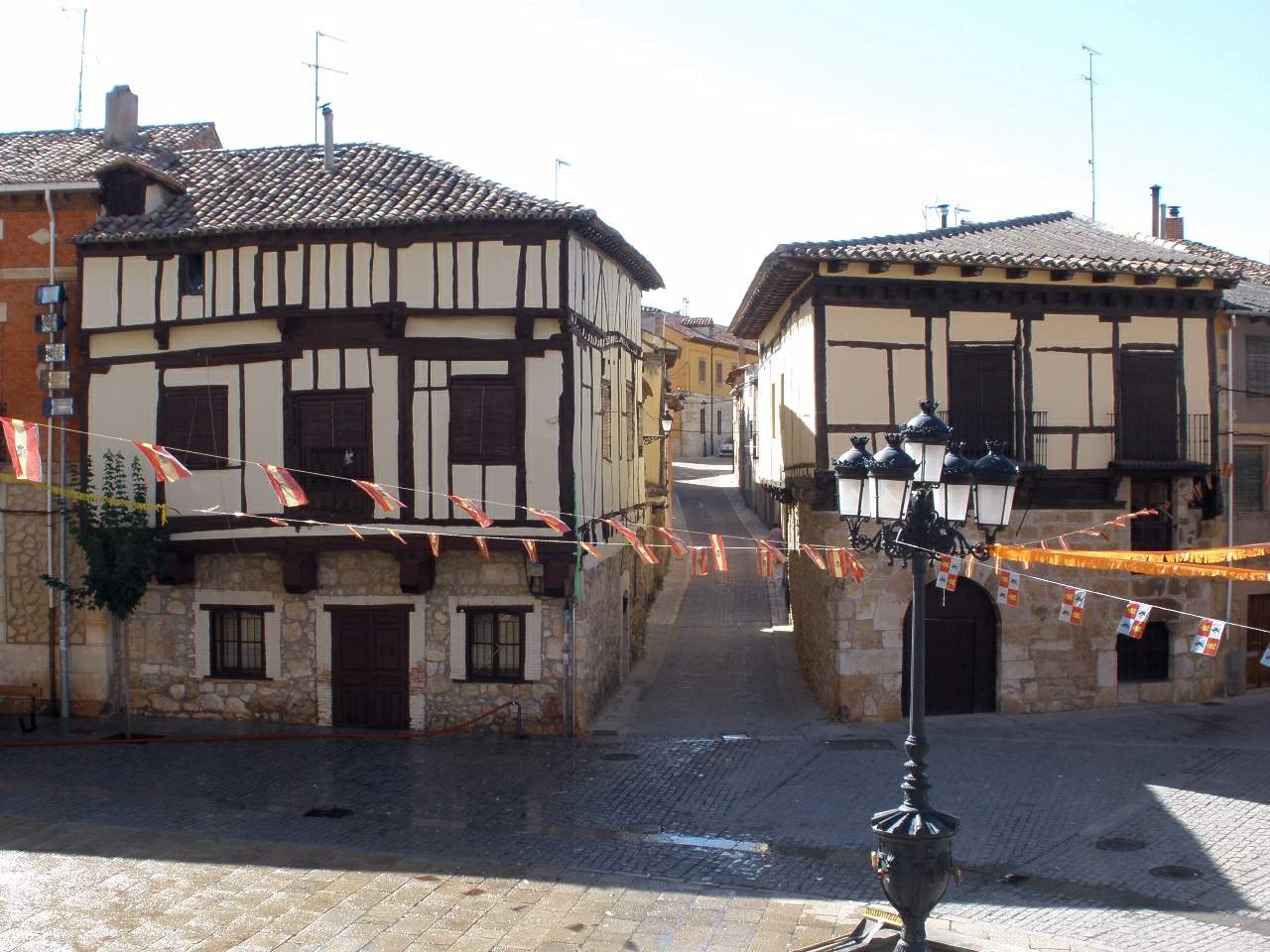
Traditional houses in Gumiel de Izán
La St. George's Rock It dominates the town from above and offers you a beautiful panoramic view of the area. A large cross has been installed on its top that is illuminated at night. But, likewise, its slopes are riddled with old cellars. However, the most ancient is in the hamlet of Quinonera, a town that was deserted at the beginning of the XNUMXth century. This winery dates back to the times of Alfonso VIII Therefore, it is also the oldest in the entire Ribera del Duero.
On the other hand, in the old village of Banuelos de la Calzada a paleochristian hermitage was recently discovered. But the main archaeological remains of the municipality of Caleruega is the roman way that communicated Tarraco with Astúrica Augusta passing through it. It is known as the "paved road" and is currently used during the Castro pilgrimage, which goes to the hermitage of the homonymous Virgin.
You have precisely one hiking route that covers the main archaeological sites in the area. Specifically, it takes you to the medieval remains of the pudia and San Mamés and has a length of five kilometers. It's not the only thing you can do. there is also the Route of Santo Domingo de Guzmán on foot or by bike. It extends over twenty-eight kilometers and visits towns such as Gumiel de Izán, Tubilla del Lago or Valdeande.
In conclusion, we have shown you the best you can visit in Caleruega. As you have seen, this small town in the Burgos province It has as much history as monumental heritage and wonderful nature. All that remains is for us to advise you that, if you visit it, you should also visit the beautiful Aranda de Duero, capital of the region and equally full of attractions. Dare to discover this unique area of Castilla y Leon.